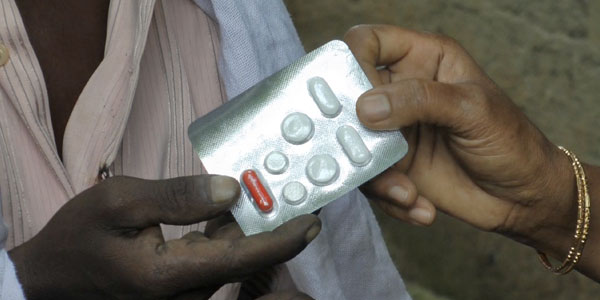
DOTS is one of the biggest health breakthroughs in the war against TB. Since 1995, 41 million people have been successfully treated and up to 6 million lives have been saved through DOTS. In 1990, less than 2% of infectious TB patients were being detected and cured with DOTS; now approximately 60% are benefitting from this care.
What does DOTS stand for?
DOTS stands for ‘Directly Observed Treatment, Short-course.’ The patient suffering from TB is administered the TB drugs by a DOTS provider who ensures that the patient takes dosage every day or every alternate day, depending on the type of regimen. The government DOTS programme in India follows an alternate day regimen.
Why is it necessary for the patient to take the medicine in the presence of the provider? Can’t the patient be trusted to take it?
This has nothing to do with distrust but everything to do with human behaviour. Since the treatment for normal TB is about six months long, it is human nature to forget taking one’s medicines, especially when the patient starts feeling better. This could drastically affect the cure or worse, could create drug-resistant TB. Therefore, the DOTS provider ensures that the patient takes the medicines and keeps a track on him or her from diagnosis to complete recovery. In this way the responsibility for cure is shifted from the patient to the health system.
Where do the medicines come from?
Providing free medicines and an uninterrupted supply to the TB patient is another important pillar of DOTS. In India, a box containing all the drugs is specifically created in the name of the patient by the local health centre which is given to the DOTS provider before the treatment begins, so that there is no interruption of medicines. However, a short supply of drugs in not an uncommon occurrence.
How is a TB patient diagnosed?
A patient suffering from the symptoms of TB is tested through a sputum test, provided free under the Revised National Tuberculosis Programme (RNTCP). After the six-month treatment is over, the patient is once again tested for complete cure. However, while this test confirms the presence of infectious TB, it doesn’t show if the patient has normal TB or drug-resistant TB. So what happens when a patient has multidrug-resistant TB (MDR TB)? Presently, there is no diagnostic provision in the RNTCP to detect this at the first stage itself. The patient is subjected to the two main drugs (category one treatment) for two to six months to which he or she is resistant. Due to unawareness and faulty implementation of the programme by the health workers in many places, after six months, the patient is subjected to category two treatment for another six months which is meant for those patients with a history of TB. Only after this trial and error which lasts for a year, the RNTCP tests most of the patients for MDR TB. This is a big lacuna in the present DOTS programme in India. It is necessary for the programme to respond much earlier by providing the necessary tests to check drug resistance after the sputum test confirms TB.
How can DOTS be made patient-centric?
The problem of Directly Observed Treatment, Short-course (DOTS) is that it is usually provider-centric and not patient-centric. The patient has to take the dosage not according to his or her convenience but that of the DOTS provider’s. The result is that the patient lapses in the treatment and he or she becomes drug resistant after some time. Therefore, the DOTS provider has to be highly motivated and visit the patient at his or her convenience. Making the programme patient-centric is key to fighting drug-resistant TB.